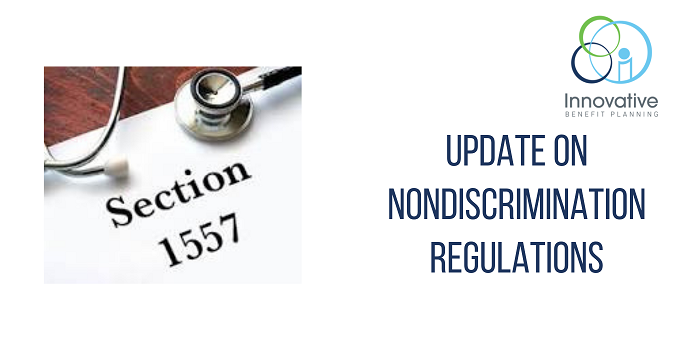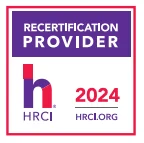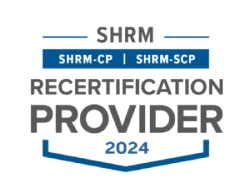HHS Proposes to Revise ACA Section 1557 Rule

On May 24, 2019, the Department of Health and Human Services’ Office for Civil Rights (OCR) released a proposed rule to revise its regulations under the Patient Protection and Affordable Care Act’s Section 1557. OCR also released a fact sheet and press release.
The proposed rule would eliminate:
- Certain definitions, including the definition of “covered entity”
- Specific nondiscrimination definitions based on sex and gender identity
- Translated taglines in significant consumer communications, the requirement to post information about Section 1557 and nondiscrimination at a covered entity’s locations and website, use of language access plans, and certain video standards for individuals with limited English proficiency (LEP)
- Any reference to a private right of action to sue covered entities for violations of the proposed rule
- The requirement to have a compliance coordinator and written grievance procedure to handle complaints about Section 1557 violations
- Enforcement-related provisions
Public comment on this proposed rule will close 60 days after this proposed rule is published in the Federal Register. After considering public comments, OCR will issue a final rule. The final rule will be effective 60 days after it is published in the Federal Register.
The current Section 1557 regulations remain in effect until a final rule is published.
Practically speaking, the proposed rule would not apply to self-funded plans and many fully-insured plans. OCR specifically states that the proposed rule would not apply to self-funded plans and that health insurers are not principally engaged in the business of providing health care. This means the proposed rule would not apply to a fully-insured plan unless the plan received federal financial assistance from HHS or unless the plan is operating a program that is principally engaged in the business of providing health care.
Background
On May 13, 2016, the Department of Health and Human Services (HHS) issued a final rule (current rule) implementing Section 1557 of the Patient Protection and Affordable Care Act (ACA), which took effect on July 18, 2016. For entities who were required to make changes to health insurance or group health plan benefit design as a result of the current rule, the current rule applied as of the first day of the first plan year beginning on or after January 1, 2017.
ACA Section 1557 provides that individuals shall not be excluded from participation, denied the benefits of, or be subjected to discrimination under any health program or activity which receives federal financial assistance from HHS, on the basis of race, color, national origin, sex, age, or disability. The current rule applies to any program administered by HHS or any health program or activity administered by an entity established under Title I of the ACA. These applicable entities are “covered entities” and include a broad array of providers, employers, and facilities. State-based Marketplaces are also covered entities, as are Federally-Facilitated Marketplaces.
The current rule was aimed primarily at preventing discrimination by health care providers and insurers, as well as employee benefits programs of an employer that is principally or primarily engaged in providing or administering health services or health insurance coverage, or employers who receive federal financial assistance to fund their employee health benefit program or health services. Employee benefits programs include fully-insured and self-funded plans, employer-provided or sponsored wellness programs, employer-provided health clinics, and long-term care coverage provided or administered by an employer, group health plan, third party administrator, or health insurer.
Affected employers include:
- Hospitals
- Nursing homes
- Home health agencies
- Laboratories
- Community health centers
- Therapy service providers (physical, speech, etc.)
- Physicians’ groups
- Health insurers
- Ambulatory surgical centers
- End stage renal dialysis centers
- Health related schools receiving federal financial assistance through grant awards to support 40 health professional training programs
Practically speaking, employers with fully-insured group health plans are subject to the current rule (because the carrier is a covered entity and is prohibited from selling discriminatory plans), and many self-funded employers will be considered a covered entity based on their business model or financial details. Furthermore, most third-party administrators (TPAs) are considered a covered entity. The Office of Civil Rights (OCR) will investigate a TPA when there is alleged discrimination in the administration of the plan. However, if the alleged discrimination is in benefit plan design (that is, the choice of the employer), the OCR will process the complaint against the employer or plan sponsor. If the OCR lacks jurisdiction over the employer, it will refer the matter to the Equal Employment Opportunity Commission (EEOC). This means that employers who are not covered entities, but have a self-funded group health plans that utilizes a TPA that is a covered entity, could end up as the subject of an EEOC investigation for discriminatory business practices.
Employers with self-funded group health plans should seek legal counsel to determine if they are a covered entity, and to obtain legal advice on the applicability of the current rule to their individual situation.
When determining if an employer receives federal financial assistance through Medicaid payments, meaningful use payments, or other payments, a physician or physicians’ group would not count Medicare Part B payments because they are not considered federal financial assistance. Most physicians are subject to the current rule because almost all practicing physicians in the United States accept some form of federal reimbursement other than Medicare Part B.
Covered entities must take steps to notify beneficiaries, enrollees, applicants, or members of the public of their nondiscrimination obligations with respect to their health programs and activities. Covered entities are required to post notices stating that they do not discriminate on the grounds prohibited by Section 1557, and that they will provide free (and timely) aids and services to individuals with limited English proficiency and disabilities. These notices must be posted in conspicuous physical locations where the entity interacts with the public, in its significant public-facing publications, and on its website home page. In addition, covered entities that employ 15 or more persons must designate a responsible employee to coordinate the entity’s compliance with the rule and adopt a grievance procedure. Employers who are covered entities should seek advice of counsel on the ways these requirements apply to them and their group health plan, and employers who are not covered entities but have a fully-insured group health plan should discuss how the insurance carrier will meet these requirements.
The OCR has provided a model notice and model statement of nondiscrimination, and taglines for employers to use. The OCR has also created an FAQ and table relating to the top 15 languages spoken in each state.
If the proposed rule is finalized as-is and published as a final rule:
- Self-funded plans will no longer be subject to the final rule
- Fully-insured plans will only be subject to the final rule if the plan receives federal financial assistance from HHS or if the plan is operating a program that is principally engaged in the business of providing health care
- Covered entities would not be required to post Section 1557 nondiscrimination notices at their locations and websites
- Covered entities with 15 or more employees would not be required to appoint a compliance coordinator and adopt a grievance procedure
- Covered entities will not be required to use translated taglines in significant consumer communications, develop language access plans, or meet certain video standards for individuals with limited English proficiency (LEP)
Sex, Gender, and Sexual Orientation Discrimination
The current rule bans discrimination based on sex, gender, sexual orientation, and gender identity. Sex discrimination includes discrimination on the basis of pregnancy, false pregnancy, termination of pregnancy, or recovery from childbirth or related medical conditions.
The current rule prohibits discrimination faced by transgender individuals trying to access coverage of health services. The current rule prohibits denying or limiting coverage, denying a claim, or imposing additional cost sharing on any health service due to the individual’s sex assigned at birth, gender identity, or gender otherwise recorded by the plan or issuer which is different from the one to which services are ordinarily or exclusively possible.
For example, a pelvic or prostate exam could not be denied based on a person’s sex assigned at birth, gender identity, or recorded gender, if it was medically appropriate. Medically appropriate coverage could not be denied for a pelvic exam or ovarian cancer treatment for an individual who identifies as a transgender man, or is enrolled in a health plan as a man.
Furthermore, blanket exclusions for coverage of care associated with gender dysphoria or associated with gender transition is prohibited. Categorical or automatic exclusion of coverage for services related to gender transition are unlawful. Denials for these services would be discrimination if the denial results in discrimination against a transgender individual. The current rule does not require covered entities to cover any particular procedure or treatment for transition-related care; nor does it preclude neutral standards that govern the circumstances under which coverage will be offered. Employers that seek to implement neutral standards limiting gender dysphoria or gender transition services in relationship to their group health plan should only do so after consulting their legal counsel.
The regulations do not prohibit single-sex toilets, locker rooms, or shower facilities so long as comparable facilities are provided regardless of sex. The current rule provides that sex-specific health programs are allowable only where the covered entity can demonstrate an exceedingly persuasive justification that the sex-specific program is substantially related to the achievement of an important health-related or scientific objective. While the current rule does not require a provider that operates a gynecological practice to add or change the types of services offered in the practice, it prohibits the providers of health services from denying or limiting services based on an individual’s sex, without a legitimate nondiscriminatory reason.
For example, if a hospital has specific protocols in place for domestic violence victims and only engages that protocol for women, the provider must revise its procedures to require that protocol for all domestic violence victims regardless of sex.
The current rule does not resolve whether discrimination on the basis of an individual’s sexual orientation status alone is a form of sex discrimination.
If the proposed rule is finalized as-is and published as a final rule:
- Sex discrimination would not include discrimination based on sexual orientation, gender identity, pregnancy, false pregnancy, pregnancy termination, or recovery from childbirth or related medical conditions
- No aspect of the final rule will apply or be imposed on a covered entity if the rule’s application would violate certain religious freedom, conscience, and nondiscrimination statutes (and their successor statutes), including:
- The Church Amendments: conscience protections related to abortion and sterilization
- The Coats-Snowe Amendment: conscience protections related to abortion, training, and accreditation
- The Weldon Amendment: protections against discrimination for health care entities and individuals who do not further abortion or other services
- The ACA: conscience protections related to abortion
Marketplace and Other Health Plans
A health insurance issuer seeking certification to participate in a Health Insurance Marketplace or a state seeking approval to operate a State-based Marketplace to which Section 1557 applies is required to submit an assurance that the health program or activity will operate in compliance with the current rule.
Marketplaces must operate in a nondiscriminatory way. Issuers that participate in the Marketplace cannot deny, cancel, limit, or refuse to issue or renew any policies that employ practices or benefit designs that discriminate on any of the protected bases.
An insurer that participates in a Marketplace would be subject to the nondiscrimination rules in the Marketplace, in its individual market business, in the group market, or when it serves as a third-party administrator for a self-insured plan.
If the proposed rule is finalized as-is and published as a final rule:
- The final rule would not apply to an insurer’s entire business. Instead, the final rule would only apply to the specific operations and lines of business for which the insurer receives federal financial assistance.
Discrimination against Persons with Limited English Proficiency (LEP) and Disabilities
An individual with LEP is someone for whom English is not the primary language for communication and who has a limited ability to read, speak, write, or understand English. The final rule increases assistance for individuals with LEP so that they can communicate with their health care providers and have meaningful access to health programs and activities.
Covered entities are required to post taglines in at least the top 15 non-English languages spoken in the state in which the entity is located or does business. These taglines will alert LEP individuals to the availability of free language assistance services and how these services can be obtained. To determine whether language obligations have been met, the only relevant factor listed in the current rule is whether a covered entity implemented an effective written language access plan.
Covered entities are required to provide effective communication and facility access for individuals with disabilities. Covered entities must provide access to auxiliary aids and services, including alternative formats and sign language interpreters, unless the entity can show undue burden or fundamental alteration. The current rule requires reasonable modifications where necessary to facilities and technology to provide equal access for individuals with disabilities.
If the proposed rule is finalized as-is and published as a final rule:
- Covered entities would not be required to post Section 1557 nondiscrimination notices at their locations and websites
- Covered entities with 15 or more employees would not be required to appoint a compliance coordinator and adopt a grievance procedure
- Covered entities would not be required to use translated taglines in significant consumer communications, develop language access plans, or meet certain video standards for individuals with LEP
Also, OCR will use the following four factors to determine whether a covered entity met its obligation to provide language assistance services to people with LEP:
- The number or proportion of LEP individuals eligible to be served or likely to be encountered in the eligible service population;
- The frequency with which LEP individuals come in contact with the entity’s health program, activity, or service;
- The nature and importance of the entity’s health program, activity, or service; and
- The resources available to the entity and costs.
Enforcement
The enforcement mechanisms under Title VI, Title IX, Section 504 of the Rehabilitation Act, and the Age Discrimination Act of 1975 apply for redress of violations of Section 1557, which include requiring covered entities to keep records and submit compliance reports to the OCR, conducting compliance reviews and complaint investigations, and providing technical assistance and guidance.
If noncompliance cannot be corrected by informal means, enforcement mechanisms include suspension of, termination of, or refusal to grant federal financial assistance.
If the proposed rule is finalized as-is and published as a final rule:
- All current enforcement procedures would be eliminated. Full enforcement authority would be designated to the OCR Director, including the authority to receive complaints, conduct compliance reviews, initiate investigations, and take enforcement actions.
- OCR will no longer take a position on whether Section 1557 provides a private right of action to sue covered entities for violations.
As soon as the proposed rule is published in the Federal Register, OCR will suspend all sub-regulatory guidance that is inconsistent with its proposed rule and its new interpretation of Section 1557. OCR may revoke the suspension in part or in whole at any time before the proposed rule is finalized. Further, OCR will automatically lift the suspension if the proposed rule is withdrawn.
Categories
Archive







